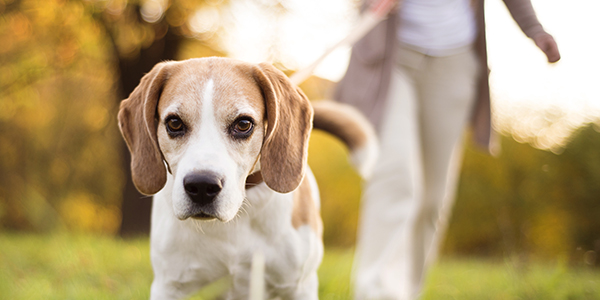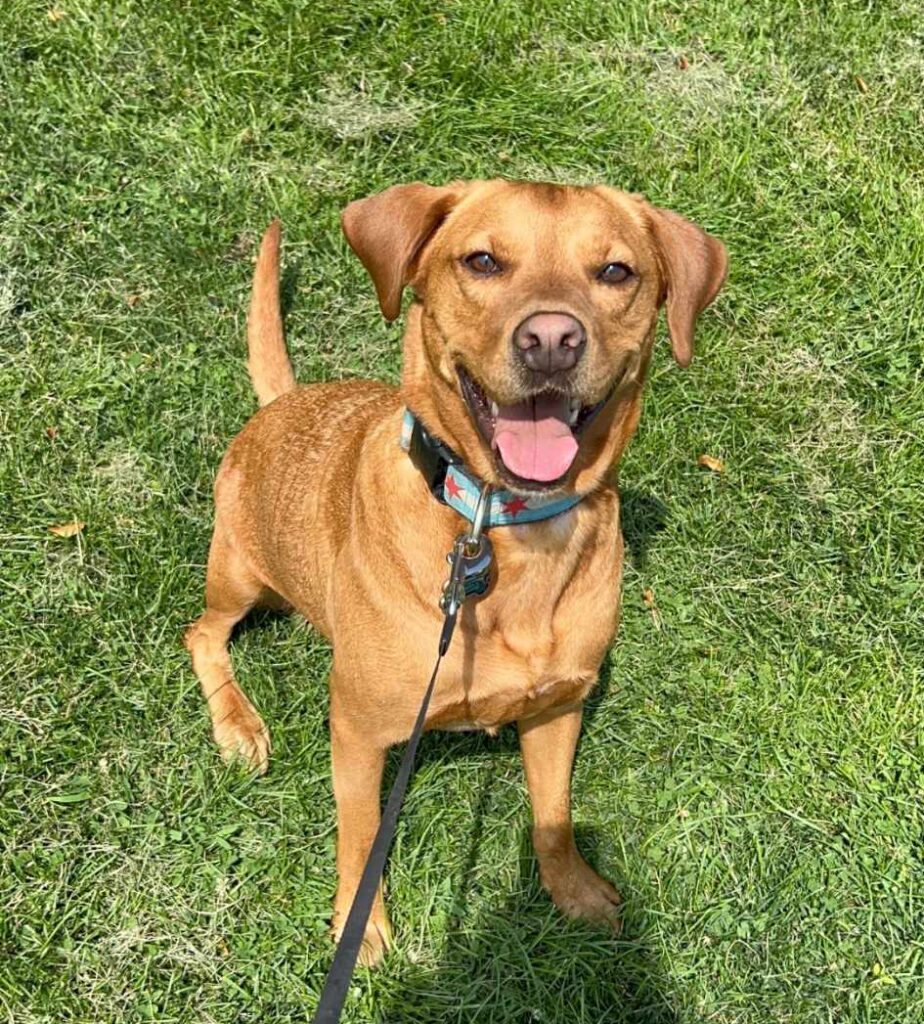We all adore the joy and companionship our furry friends bring into our lives. However, caring for your dog mindfully is crucial to staying healthy and preventing injury. From playful walks in the park to lifting them into the car, our movements as owners greatly impact both our dogs’ well-being and our own. Just like any physical activity, improper movements while caring for our dogs can lead to injuries for both parties involved.
That’s why it’s essential to approach their care with mindfulness, ensuring that we move in ways that support both our own and our dogs’ physical health. In this blog post, we’ll explore the significance of mindful movement in dog care and provide practical tips to help you and your pup stay injury-free while enjoying your time together.
In 2020, my son Drew and his soon-to-be fiance, Victoria, moved into a Chicago apartment near Millennium Park. Within the first week, they adopted a rescue dog and named him Barry after The Flash. We all instantly fell in love with Barry, including myself as if Barry was my grandchild. Victoria is a huge animal lover. Drew, not so much. We did not have a dog while Drew was growing up. My husband and I both grew up with and loving dogs. However, as adults, along with our daughter, Jenna, we realized we were allergic to dogs. So, our kids were not raised with a dog or any other pet.
Drew took to having a dog like a duck takes to water and unlike the rest of his family, he is not allergic to dogs. Drew’s love for Barry doesn’t surprise me because as a little boy, Drew walked around the house saying when he grew up he wanted to be a daddy. To many dog owners, their dog is like their child and Drew is no different. Recently Barry had multiple UTIs needing multiple rounds of medications. Drew would call me expressing such extreme worry and wondering how I could have possibly dealt with him and Jenna when they got sick.
What Happens When You Don’t Move Mindfully While Caring for Your Dog?
Having a dog comes with a lot of responsibility and daily tasks, which require a lot of bending, squatting, lifting, holding onto, and walking. These repetitive movements along with the “dog mentality” of going after shiny objects come with the possibility of injury.
Winter comes with new, potentially, dangerous challenges of ice, snow, and the worst – black ice. Walking your dog or just going outside for brief moments comes fraught with the danger of falling, slipping and sliding. I have two girlfriends who, while walking their dogs, slipped on the ice and broke their wrists requiring surgery.
Other dog-related injuries I have seen:
- While walking his German shepherd, Julie, Julie decided to go a different direction causing my uncle to get tangled up in his dog’s leash and fall down.
- Gail bent down to fill her dog’s food bowl and hurt her back.
- While Lori walked her dog, her dog took off after another dog pulling Lori’s arm causing rotator cuff tendonitis.
- A patient tripped over her dog in the dark dislocating her shoulder and injuring her eye badly enough that she needed surgery.
- Pat, a 75 y/o triathlete, slipped on the ice while walking his dog, breaking his patella, spraining his thumb, and injuring his teeth.
I understand, you all love your dogs and would do anything for them, and I would never ask you to give them up in order to be safe. However, below are some mindful tips on how to protect yourselves while taking care of your dogs.
8 Tips for Caring for Your Dog Mindfully
1. Choosing a Dog
Choose an appropriate size dog for your capabilities i.e. I do not recommend seniors get a dog larger than 30 pounds.
2. Walking Your Dog
- Engage your abs. This will improve your stability and prepare you for sudden movements from your dog. Check out my YouTube channel for a video on engaging your abs.
- Use a good leash and collar. This will allow you to better control your dog.
Be mindful. When you’re aware or mindful of what is going on around you, it’s easier to anticipate anything that might cause your dog to suddenly jolt or move fast. - In the snow and ice, wear a traction system such as Yaktrax on your shoes.
- If you have balance challenges, use a walker.
3. Daily Dog Responsibilities
These may include filling food and water bowls, picking up waste, washing their feet, connecting the leash to their collar.
- Hip hinge by keeping your back straight and bending or hinging at your hips allowing you to use your glutes and hamstrings, not your back muscles.
- Squat by using the same hip hinging technique above, but allow your knees to bend.
- If you have a large dog, you can get a water/food bowl that are higher off the ground so you don’t have to bend so far.
4. Lifting Your Dog
Use your legs to lift, keep your back in neutral and abs engaged then hinge at your hips by sticking your backside back and bending at your knees. Here is a video on how to squat properly.
5. Carrying Your Dog
When carrying your dog, hold him or her close to your body.
6. Giving Your Dog a Bath
Kneel on a soft pad to protect your knees and hinge at your hips, just like you would in standing, in order to reach your dog.
7. Walking Around the House
- Walk around your dog instead of stepping over your dog to avoid losing your balance.
- At night, if your dog sleeps in your room, use a nightlight so you can see your dog. Or better yet have your dog sleep elsewhere so as not to accidentally trip over your dog.
8. Doing Exercises Mindfully
By mindfully moving throughout your day, you will build strength and prevent injuries. Download the balance exercises from my website to improve your balance and prevent falls.
I have come to enjoy and love my role as my friend’s dog’s “favorite aunt” or being Barry’s grandma. I get to play and cuddle with them for a couple of hours and then I can give them back to their owners for their full responsibility.
Do you have any dog stories that may have led to an injury? Do you have any other tips on how to take care of your dog? Drop me an email at denise@themanualtouch.com and let me know!









Never use a retractable leash. It reduces the control you have over your dog’s movement. It’s very easy to become entangled and fall. I’m a lifelong dog owner and have seen many accidents occur because of the retractable leash. Always use a regular leash.
Thank you for the great tip Lucy!
Make sure dog is trained to heel., So when you walk him/her he/her can not pull you and make you fall down. My husband was in the 3 days with a severe concussion.. This is especially important in our snowy and icy
winters